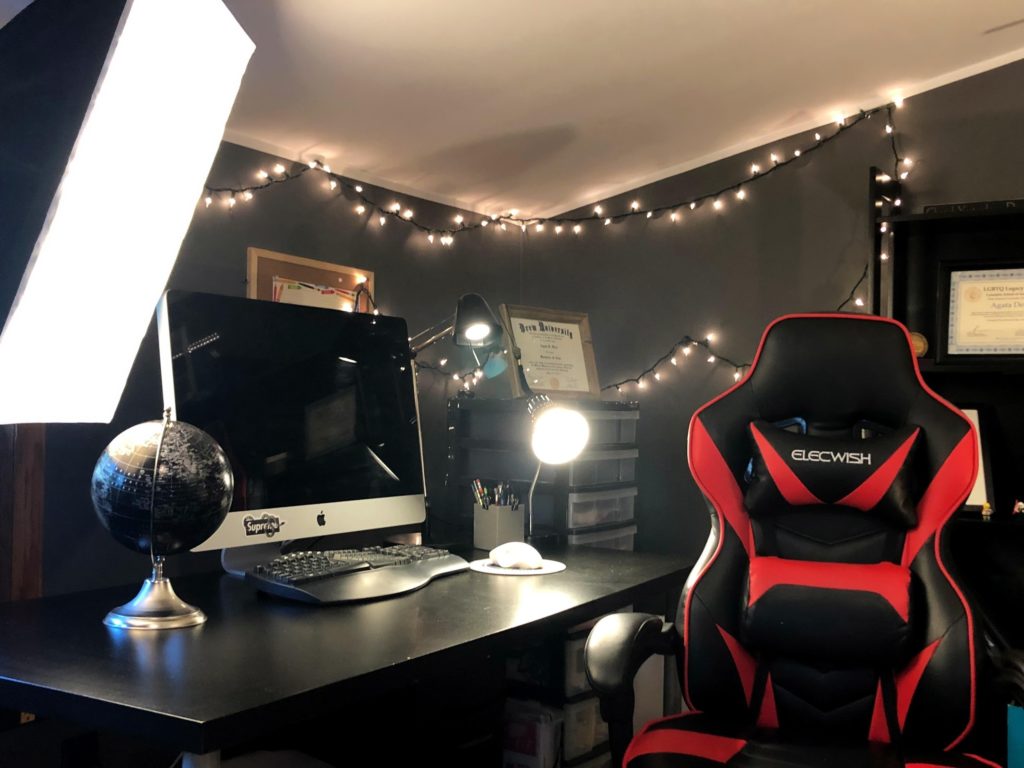Ten Ways COVID-19 Created the Perfect Storm for Social Worker Burnout (and why I still have hope)
Editor’s note: This post was written by Melanie Sage from the University at Buffalo’s School of Social Work in response to the COVID-19 pandemic. She originally posted it on LinkedIn and is re-published here with her permission. This is a follow-up to her post – A Love Letter to Social Workers on the Front Lines of COVID-19. You can follow Melanie on Twitter at @melaniesage.
In April 2020, just months into the pandemic that changed the landscape of how we work and live globally, and in the face of concerted love to health workers, I wrote a love letter to social workers, the invisible heroes of the emerging pandemic. The letter spread like fire, viewed by more than 100,000 people. Many social workers resonated with the stories I shared and many people who work with social workers also expressed their gratitude for the steady dedication of social workers.
As we move into a new year, I feel called to update people about the state of affairs from my point of view. As a university professor, I do not work with clients directly. However, this past year, I have witnessed the impacts of COVID-19 on students, their families, and their clients. Despite instructors’ flexibility, we’re losing students like never before – they are leaving school, often without a word. Sometimes we hear; a family member has fallen sick or they just can’t manage homeschooling for their children, working from home, AND going to school online. Who can blame them for delaying their educational ambitions to take care of their families? For some, it’s not a matter of choice; it’s a matter of surviving these times.
For those students who have held on, the required social work internships have evolved dramatically. Social work students deliver services online, learn remotely, and show up to social services agencies in deep transition. Undoubtedly some innovation will come from this, but also some workers will leave and not return. Their education did not prepare them for the use of technology, for working from home, for the high risk of infection, for the chronic long term crisis work they face now.
How did COVID-19 create the perfect storm for social worker burnout? Social workers told me.
Fostering a spirit of collaboration with Social Work Students during the COVID-19 Pandemic
Editor’s note: When COVID19 cases started rising in the US in March 2020, institutions of higher education made significant decisions that required instructors and students to pivot the delivery and design of courses almost overnight. In this blog post, an instructional team from Columbia University’s School of Social Work (CSSW) detail how they approached changes to their course using trauma-informed teaching strategies. The team consists of Matthea Marquart, Director of CSSW’s Online MSW Program, Katherine Seibel, Legislative and Policy Analyst at a nonprofit promoting young people’s wellbeing, and Nicole Wong, Director of Support, Advocacy, & Violence Prevention at Vassar College. For more information related to this post, please reach out to Matthea at @MattheaMarquart.
Our spring semester online course, which is part of Columbia University School of Social Work’s (CSSW) Master’s of Science in Social Work program, began in March 2020, with our first class session on March 10. The next day, the World Health Organization declared COVID-19 a pandemic, and the next week was spring break. Columbia University, which is located in New York City, had already been taking steps to protect student safety, such as moving residential courses online, but our course was already online, with our students located across the United States.

As a result, the policy impact that most affected our course came with the University’s announcement on March 20 that all spring semester courses would be graded pass/fail. This policy impact freed us to make significant changes to our course assignments and grading policies mid-semester, in collaboration with each other as the instructional team, as well as with the students. We also implemented trauma-informed teaching strategies in response to the changing circumstances in the world, which had a significant impact on students and which we recognized could contribute to increased experiences of trauma. Trauma-informed teaching recognizes that past and ongoing trauma can impact current student success, and employs strategies to foster a supportive environment and reduce barriers to learning. An example is sharing power with students through collaboration and choice about course decisions.
Academic and Professional Blogging
Editor’s Note: This post is one in a series about how technology can be used to develop and sustain one’s professional network. The idea for this post came from a think tank hosted by the University at Buffalo’s School of Social Work in June 2019, looking for a way to teach students in their new online Doctorate of Social Program (DSW) program about how to develop key stakeholder networks in relation to a substantive topic area. In this series, we are exploring the concept of a Professional Collaboration Network (PCN), which are technology-mediated user-centered relationship constellations designed to enhance or enrich connections, knowledge, and professional opportunities. This post reviews how academic and professional blogging can be used to share and curate information for practice communities.

Blogs, and the act of blogging, have come a long way since the mid 1990’s when they essentially performed as personal journals published on the internet; they are now often fully fledged outlets for journalism, advocacy, and academic research (Smith, 2010, Kanter and Fine, 2010, Kirkup, 2010, Rosenberg, 2009). Although some may feel that blogging has become passé in the current and crowded social media landscape, others would argue blogging is alive and well (Fiesler, 2019; Perry, 2015). The main goal of this blog post is to describe why and how academic blogging can help contribute to your Professional Collaboration Network (PCN), and offer some basic tips for getting started. To learn more about PCNs, please read this post:
Today most people know what a blog is; in fact ,you are staring at one right now. The bigger question as academics or professionals is why would we want to develop/maintain a blog? Here we dive into just a few of the many answers to this question:
A Love Letter to Social Workers on the Front Lines of COVID-19
Editor’s note: This letter was written by Melanie Sage from the University at Buffalo’s School of Social Work in response to the COVID-19 pandemic. She originally posted it on LinkedIn and is re-published here with her permission. You can follow Melanie on Twitter at @melaniesage.
Social workers are often unsung heroes, and that’s often ok with them. They go about their work in the backgrounds of organizations that are meant to do other things: in hospitals that are meant to save lives, in schools that are meant to educate children, in child welfare agencies where the work is so sensitive that they avoid talking about it. In fact, most people don’t want to think about it; they hear “social work” and say, “OH, I could never do that.” Social workers try to show up with humility while giving their best help to people who are the most vulnerable.
As a social work professor, I’ve done casework in hospitals, child welfare agencies, crisis hotlines, and in the Veteran’s Administration. But now I am in the very privileged place of teaching others about social work while I reflect on, analyze, and research best practices for making the world a better place for the most vulnerable. I have not worked through a pandemic until now. Today I am telling you the stories of my colleagues, my former students, my current students- those I am connected to, like a string of hearts, with our value for social justice serving as a constant thread. I have asked permission to share these stories.
The Power of Lighting in a Virtual Classroom: Tips on Improving Webcam Lighting for Online Educators
Editor’s Note: Agata Dera, MSW, is an Associate and Live Support Specialist with the Columbia School of Social Work’s (CSSW) Online Campus, where she works with social work faculty and students in online courses to optimize the digital learning environment. In this post, she provides insight on how online educators can put their best foot forward during live sessions through lighting. I first met Agata when I participated in CSSW’s Institute on Pedagogy and Technology for Online Courses last summer. You can read more about my experiences with the Institute in this post. In full disclosure, Agata did review and assess my ability to use lighting in a virtual classroom. All I can say is that I passed.
My primary responsibility is to provide technical support to the Columbia School of Social Work’s (CSSW) online community. My goal is to ensure that technology is considered as a tool rather than a barrier in online education. Also, as an alumni of this program, I am so proud to be a part of a virtual campus that is so committed to the quality of online learning by utilizing technological advancements.
One of the ways in which we ensure that our program is at the highest quality is by educating our community about the importance of great lighting when presenting on a webcam. Good lighting is one of the core elements of a successful on-camera performance for any online educator. It is part of our ongoing effort to create engaging, enlightening and innovative online courses in the most effective way possible.

Using Twitter at a Professional Conference
Editor’s Note: This post is one in a series about how technology can be used to develop and sustain one’s professional network. The idea for this post came from a think tank hosted by the University at Buffalo’s School of Social Work in June 2019, looking for a way to teach students in their new online Doctorate of Social Program (DSW) program about how to develop key stakeholder networks in relation to a substantive topic area. In this series, we are exploring the concept of a Professional Collaboration Network (PCN), which are technology-mediated user-centered relationship constellations designed to enhance or enrich connections, knowledge, and professional opportunities. This post covers the use of Twitter at professional conferences as a way to share your insights and extend the reach of the conference sessions.
This is the fourth blog post in a series on using Twitter to create Professional Collaboration Networks (PNCs). Previous posts included:
- What is a Professional Collaboration Network (PCN) & why do you need one?
- Twitter for your Professional Collaboration Network (PCN)
- How do you do relational Twitter?: Developing your Professional Collaboration Network

In this blog post, we discuss how Twitter can be used at a professional social work conference. There are at least two important reasons why tweeting at conferences is a valuable practice. First, attending conferences requires resources and time. Not everyone has the ability to attend all conferences, and one person certainly cannot attend all of the conferences that interest them. By tweeting from a conference, participants can share what they learned in sessions with anyone who is interested. Not only does this extend the reach of the knowledge shared at a conference, it makes content accessible to individuals and groups who might not be able to attend. Curating all the tweets from a conference can create an informal transcript of the happenings at a conference from multiple points of view. Second, tweeting at a conference allows an individual another way to network and meet people. Creating a public list of individuals and groups on Twitter who are attending the conference can supplement a stack of business cards and allow you to engage with more people during and after the conference. Alternatively, if you can’t attend a conference, you can follow the tweets of users who are at the conference and reply with your questions. There are even some conferences that occur only on Twitter (check out @Biotweeps).Third, it can increase your visibility in a particular subject area. For example, if you are presenting at the conference, you have the opportunity to share a photo and information from your session. The suggestions in this post come from the real life experiences of the authors as well as recommendations gleaned from articles written about conference tweeting.


